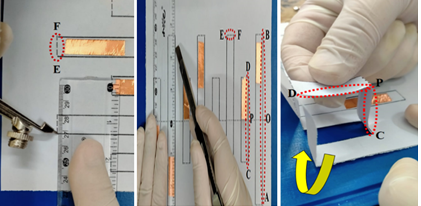Innovative designs for antenna
systems have been successfully designed by the leader of smart systems
engineering laboratory, Professor Mohamed Marey. It is a collaborative effort
involving research centers in France, Italy, Germany, UK, Pakistan, Egypt, and
India. Cancer detection, wearable internet of things healthcare, 5G cellular
networks, and wireless local area networks have all been primary focuses of
these designs.
In this year, the laboratory
has delivered no fewer than fifteen creative solutions to this crucial wireless
technology. They have been documented in prestigious periodicals. The majority
of these innovations have also undergone actual implementation and testing to
guarantee their efficacy in real-world contexts.
Specifically, the
laboratory proposed new innovative antenna systems for the early detection of
brain and Kidney cancer. Tumors as small as 2.5 mm were successfully detected. The
benefits of these methods include small size, speed, low cost, pain-free
examination, and ease of use. The practical deployment of these antennas
took place at the Faculty of Engineering, King Saud University.
Body sensor networks (sometimes
called medical body area networks) are wireless networks of wearable computing
devices. These devices may be implanted within the body, surface-mounted on the
body in a fixed position, or accompanied by devices that humans can carry in
various positions, such as in clothing pockets, by hand, or in various bags. The
healthcare sector is anticipated to be the first to make use of
this technology, particularly in the area of continuous monitoring and
logging important data of patients with chronic conditions including diabetes,
asthma, and heart attacks. These networks can also be used in the realms
of sports, the military, and even security. Extending the technology to new
domains may further facilitate communication by allowing for the effortless
transfer of data between humans and machines. Several novel antenna systems for
use in medical sensor networks were successfully designed by the
laboratory.
Connected vehicles,
which enable vehicles to exchange data with one another, are becoming
increasingly popular in today's fast-paced society. Automated and
intelligent driving experience is possible if vehicles are linked to more
communication devices. This calls for the installation of automotive antennas
that can handle various radio frequency services simultaneously. The smart
systems laboratory has properly introduced novel automotive antenna designs.

